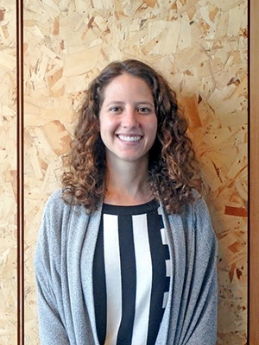Drama, drama, drama. When I was watching Mad Men, all of the characters seemed to be swirling in the drama that surrounded their lives. Was there anything available to them to help them sort all the drama? Apparently, they didn’t know about Employee Assistance Programs (EAPs).
Have you heard about EAPs? Here’s some background. The U.S. Office of Personnel Management describes an EAP as a “voluntary, confidential program that helps employees (including management) work through various life challenges that may adversely affect job performance, health and personal well-being to optimize an organization's success.” The program launched in the 1940s, so—if we’re working with the 1960s time frame of Mad Men—those characters could surely have taken advantage of this, especially as the program was founded to address the impact of alcohol misuse on a business!

Today, addressing substance misuse is still an important part of counseling in an EAP, but the programs now focus on overall well-being at home, with family and at work.
Instructor Dana Walsh, M.A., LMFT, currently serves as an employee assistance counselor at UC Berkeley's internal Employee Assistance Program. A licensed marriage and family therapist and Certified Employee Assistance Professional (CEAP), Walsh has experience working in corporate and university-based EAPs, as well as in school, clinic and home-based settings treating individuals, families and children.
With today’s current events and tense political environment, just how important is it for a private business or a public organization to offer an EAP? And how does someone come to work in this area of psychology? We spoke with Walsh to find out more.
On Skillset:
Strong interpersonal and communication skills are crucial, extending beyond whichever degree you might have.
What was your motivation to focus on this type of counseling and pursue employee assistance as a career?
I come from a background in counseling psychology, but my graduate school program did not propose "employee assistance" as a potential career option. However, my father has a business background, and growing up I was exposed to the mindset of the corporate world. Being able to combine my passion for psychology into the workplace seemed like a natural fit. Personally, I find I gravitate more toward solution-focused, short-term counseling, which is the essence of employee assistance work.
EAPs were introduced to help cope with alcohol misuse. Do you still see that as a factor today?
Even though employee assistance historically stemmed from the substance use field, these days substance use is not a main driver for employees to seek employee assistance services. In my experience, most people approach an EAP with concerns about family or relationships, stress or work—and in any of those, substance use issues can play a part.
While a solid understanding of substance use and abuse is still necessary, experience in addictions counseling is no longer a must. The ability to conduct a thorough assessment (including for substance use), possession of strong written and verbal communication skills, the ability to establish relationships with key partners, and response training to critical incidents and threats of violence are critical skills to have in this field. As for a formal counseling and psychology education, an employee assistance professional is typically licensed (or pursuing licensure) as a therapist, social worker or psychologist—or at minimum—needs be a Certified Employee Assistance Professional (CEAP).
EAPs have a longstanding history with the federal government and helping maintain work/life balance in the public sector. But over the years, it’s shifted toward the private sector. How does an EAP contribute to a company’s success?
Employee Assistance Programs are designed to improve or maintain the productivity and healthy functioning of an employee, as well as assist with personal- or work-related concerns. There is a big drive these days for companies to have extensive work/life benefits and to promote wellness and balance; a crucial part of this is mental health, or emotional wellness. Many companies, in trying to attract and retain employees, want to meet these expectations. Having an EAP is a benefit both to the employer and the employee: Employees who are emotionally healthy and resilient can help keep workplaces safe and the company successful.
Is it important for employee assistance professionals to be also trained in human resources in order to better serve the company and its employees?
It's certainly helpful for human resources personnel to have a background in psychology, but it is not necessary for someone working in employee assistance to have an HR background. Many skills—including communication, general psychology, personality psychology, law and business—easily transfer from other fields to a career in employee assistance. Strong interpersonal and communication skills are by far the most crucial, and they extend far beyond whichever degree you might have.
Do you feel that EAPs are an underutilized resource because of the stigma that comes with seeking help for mental health? Do you find that in the Bay Area, this might not be as true as it may be in other areas of the country?
Compared to other parts of the country, the Bay Area offers a vast array of community mental health resources. But even in Berkeley, there is still a stigma to seeking mental health services! In certain situations, it is helpful for those of us who are Employee Assistance Professionals not to label ourselves as "therapists," but instead refer to our roles as counselors or consultants.
Some employees may equate EAPs with therapy; others may see us as a sounding board or as an adviser. Another hindrance is that many employees aren't aware of their full company benefits—such as if their company even offers an employee assistance program. It's something that they probably heard about at some point when they were onboarded but forgot over the years. It is important to keep this resource in the forefront of employees who need it as well as for those who don’t realize they need it. Promoting your services—through email communications, health fairs, promotional events, offering workshops—is a key piece of employee assistance work.



